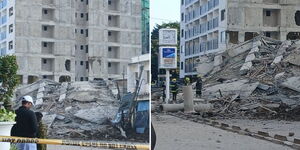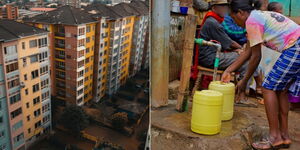Kenya has embarked on a transformational journey with the launch of the first 3D printed house, marking the entrance of the revolutionary technology in the construction sector.
UK-based firm, CDC Group, in conjunction with Bamburi Cement's parent firm Holcim has launched the first 3D printed house in Athi River, Machakos County, marking the country's exodus towards innovation in the additive manufacturing industry.
The home, dubbed Tree No.0 is a two-bedroomed house located within Bamburi Cement premises in Athi River and is a product of the joint venture between the two companies, named 14 Trees and was opened for public viewing on Monday, December 6.
The project is the country's pilot program in its adoption of the revolutionary technology in the housing sector, in a bid to alleviate the looming housing crisis that has proved to be Kenya's source of misery.
Speaking during the launch on Monday, December 6, Principal Secretary for the State Department for Housing and Urban Development, Charles Hinga, lauded the project stating that it will potentially aid the government in the fast delivery of affordable housing in the country.
"In line with the Affordable Housing Programme, and given the effects of climate change being experienced the world over, this project is indeed timely and opportune," he stated.
3D-printing of houses is done using a giant 3D printer that ejects a special concrete using a nozzle, which makes it possible for a wall to be completed in just 12 hours compared to the conventional four days.
The technology proves beneficial as it cuts down construction time by a significant amount through automated labour as well as optimizing the usage of construction materials hence taking the machine a minimum of a week to bring up a structure.
The technology is climate friendly as components are printed on demand with the recycling of leftovers reducing wastage.
In addition to that, the technology is preferred for its production of structures that are mold and inferno resistant and that can withstand harsh weather conditions compared to the conventional structures.
The structure will act as a show house for a 52-unit housing complex in Kilifi whose construction is scheduled to begin early 2022.
The project, set to be Africa's largest 3D printing housing project, will offer 1, 2 and 3 bedroom units, estimated to cost Ksh2.3 million for each eco-friendly home.












